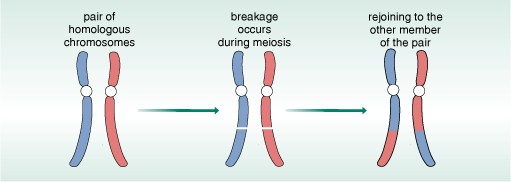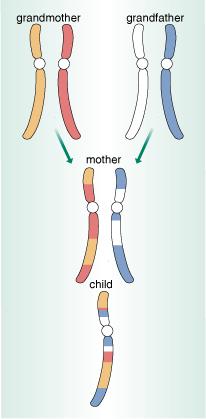5.2 Genes and chromosomes
Genes are commonly referred to as the ‘blueprints’ for life – the basic units of
Each gene contains the instructions for making a specific protein which in turn instructs our cells and tissues how to interact, grow or respond to damage and diseases. For example, there is a gene containing instructions for making the hormone insulin, a substance with an important role in regulating our blood sugar level. While we each have a gene that codes for insulin, the precise sequence of units within that gene can vary between individuals. Such differences, known as DNA
Genes are organised into 23 distinctive pairs of structures called

In humans, the 23 chromosome pairs hold tens of thousands of genes that together are known as the
Each of us inherits one member of each chromosome pair from each of our parents – but before they are passed on during sexual reproduction, material within each of these chromosome pairs crosses over during the formation of egg or sperm, part of a process known as meiosis (Fig. 11). Natural breakages occur on each paired chromosome, shown here at the white line two thirds of the way down, and a section of genetic material is exchanged such that novel combinations are formed. Each egg or sperm inherits just one of these paired chromosomes which includes a novel combination of material from each parental chromosome.

The result is that offspring inherit combinations of each of their parents' chromosomes, and can therefore also exhibit characteristics of each parent, and of earlier generations (Fig. 12).

During egg and sperm formation, and during breakage and rejoining of the parental chromosomes, additional changes to the genetic sequence may occur. Such ‘
